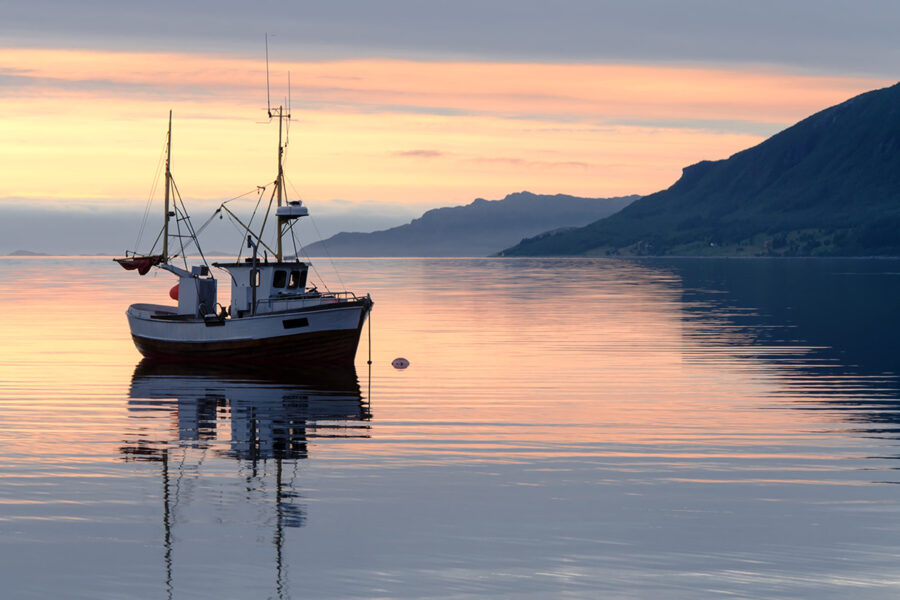Industry leaders following the negotiations on TAC and fishing opportunities in 2024 said last week that there was little progress to report.
A series of bilateral meetings between the UK and Norway and the UK and EU, and trilateral talks between all three parties, are expected to continue, with final decisions to be agreed at the EU Fisheries Council of Ministers in December.
Mike Park, chief executive of the Scottish White Fish Producers’ Association, said that progress was ‘very, very slow’.
Speaking from Brussels on Tuesday last week (21 November), where the trilateral talks were taking place, he said: “They are working on a package but there is nothing definite as yet – we’re waiting to see what the pieces of the jigsaw will look like.
“This round is due to be concluded on Thursday, so by then we should know whether there is an agreement or whether they will need another round.”
A major issue for the UK and particularly the Scottish industry is to ensure there is a significant increase in the Northern Shelf cod TAC, in line with the MSY approach. This suggests that the combined TAC for the three sub- stocks (Northwestern, Viking/ Skagerrak and Southern North Sea/Eastern Channel) should be 34,120t, rather than the 22,691t that ICES has advised.
The former figure would give an increase of 25.4% on this year’s TAC, while the latter would mean a 16.6% cut.
At the beginning of the talks, it appeared that the Scottish government was behind the industry’s call for the full 25% increase to be agreed, but Defra’s position was unclear.
Mike Park said it now seemed that the UK delegations ‘are at one in terms of that we need to be towards the upper end’. “I think there’s an understanding that the science, the state of the stocks, allows us to be at the upper end in terms of the MSY approach, as opposed to the headline advice.”
A likely difficulty in the talks will be how to allocate quota shares in the new Northwestern sub-stock, which merges the former west of Scotland and North Sea TACs, because while some countries had allocations in the North Sea, they had none west of Scotland.
Mike Park said: “I think there is a keen awareness that there will be nations who will lose out as a result of any allocation west of Scotland – Norway, for one. They have no cod west of four degrees, and Denmark have no fishing rights west of four degrees as well, so there is some tension there.”
NFFO chief executive Mike Cohen said there were some zero TAC recommendations from ICES that were concerning.
He said: “In some cases, the advice coming out does not seem to match what the boats are seeing on the grounds, so there is certainly a legitimate conversation to be had around how some of the ICES figures have been arrived at, what their data is like, what their assessment units are, and whether they really match up to the real world.
“We have a whole variety of issues different sectors are interested in. We are fairly sanguine about the way some of the agreements seem to be moving towards, but in other areas the advice is more concerning.
“Obviously there is the cod, and the advice on pollack in the Channel is a big concern to the south coast fleet. Also, the zero TAC advice for sole in VIIa is a real concern for the inshore fleet in that area. What they do is very different from the big UK beamers fishing in the Irish Sea – their catch is relatively small, but is a major contribution to those businesses.
“We just have to wait and see how the discussions progress. We are getting updates from officials when we can, we’re putting our views into Defra at every opportunity, and we hope they are making their way into the negotiations.”
EU ministers hold November Council
EU fisheries ministers held a first exchange of views last week on proposals from the Commission on fishing opportunities in the Atlantic and the North Sea for 2024 and, in the case of some stocks, for 2025 and 2026.
The stocks are those the EU manages either on its own, jointly with neighbouring non-EU countries, or via agreements reached under the regional fisheries management organisations.
For the first time, in the case of nine stocks, the Commission is proposing to set multi-annual TACs for two to three years, instead of re-evaluating them annually. This is based on multi-annual advice from ICES.
“The goal of the multi- annual approach is to help ensure certainty and stability for the industry, and to improve the efficiency of the decision- making process,” said the Commission.
This story was taken from the latest issue of Fishing News. For more up-to-date and in-depth reports on the UK and Irish commercial fishing sector, subscribe to Fishing News here or buy the latest single issue for just £3.30 here.
Sign up to Fishing News’ FREE e-newsletter here.








